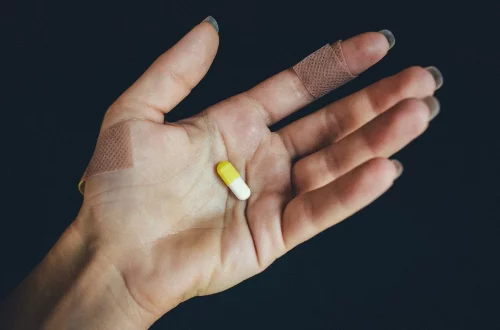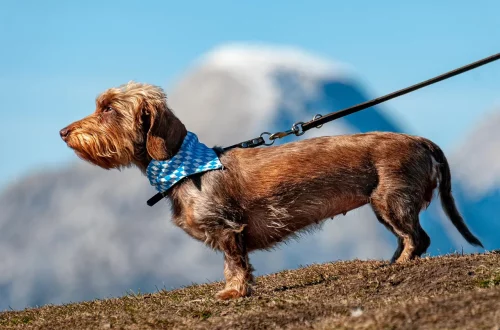
The Fascinating World of Horses’ Tails: Care and Significance Explained
The majestic horse, often referred to as a symbol of grace and strength, captivates our imagination in various ways. One of the most striking features of a horse is its tail, an appendage that serves many purposes beyond mere aesthetics. The tail is not only a means of communication but also plays a crucial role in the health and well-being of the horse. For horse owners, understanding the significance of a horse’s tail and how to care for it is essential for ensuring their equine companions remain healthy and comfortable.
The horse’s tail, with its flowing mane of hair, is a beautiful feature that adds to the animal’s overall appearance. However, it is much more than just a decorative element. Horses use their tails to express emotions, ward off insects, and even communicate with other horses. Additionally, a well-maintained tail can indicate the overall health of the horse. Therefore, it is vital for horse enthusiasts to learn how to properly care for this important feature.
In this article, we will explore the various aspects of horse tails, including their anatomy, grooming techniques, and the significance they hold in the equine world. By delving into these topics, we will gain a deeper appreciation for the fascinating world of horses’ tails.
The Anatomy of a Horse’s Tail
Understanding the structure of a horse’s tail is fundamental to appreciating its function. The tail is composed of several key components, each serving a specific purpose. The tail is primarily made up of bone, muscle, and hair. At its base lies the coccygeal vertebrae, which provide the skeletal support necessary for the tail’s movement. These vertebrae allow the tail to be flexible, enabling the horse to swish it back and forth.
Surrounding the vertebrae are muscles that control the movement of the tail. These muscles allow horses to use their tails to express a range of emotions, from annoyance to excitement. The hair of the tail is another vital component. It is often thick and long, providing protection to the underlying structures while also serving a practical purpose by helping to keep flies and other pests at bay.
The hair itself grows in a pattern that can vary from one horse to another, adding to the unique characteristics of each animal. Some horses may have tails that are full and flowing, while others may have thinner or shorter tails. The condition of the tail hair can also reflect the overall health of the horse; a shiny, well-kept tail often indicates good nutrition and care.
In addition to its anatomical features, the tail also plays a significant role in communication among horses. The way a horse holds its tail can convey various feelings. For instance, a tail held high may indicate excitement or happiness, while a tucked tail often signifies fear or submission. Understanding these signals can enhance the bond between the horse and its handler, making communication more effective.
The Importance of Grooming the Tail
Grooming is an essential part of horse care that extends beyond mere aesthetics; it directly influences the health of the animal. A horse’s tail requires regular attention to maintain its condition and prevent issues such as tangling, matting, and skin irritations.
Regular brushing is vital to remove dirt, debris, and any potential pests that may find their way into the tail. Using a wide-toothed comb or a specialized tail brush can help prevent breakage and damage to the hair. Starting from the bottom and working your way up is an effective technique, as this can help minimize pulling and discomfort for the horse.
In addition to brushing, washing the tail periodically is important, especially if the horse spends time in muddy or dirty environments. Using a gentle shampoo specifically designed for horses can help maintain the cleanliness of the tail without stripping away essential oils. After washing, it’s crucial to thoroughly rinse out any soap residue, as leftover products could lead to skin irritations.
Conditioning the hair is another essential step in grooming. Using a quality conditioner can help keep the tail soft and manageable. Some horse owners also choose to apply specialized products designed to promote tail growth and strength. These products often contain natural ingredients that nourish the hair and scalp, leading to a healthier tail.
Beyond aesthetics and cleanliness, grooming a horse’s tail can foster a deeper bond between the horse and its owner. The grooming process itself can be a calming experience for both the horse and the handler, providing an opportunity for interaction and trust-building.
Understanding Tail Behavior in Horses
Horses communicate a great deal through their body language, and the tail is no exception. Observing tail behavior can provide valuable insights into a horse’s emotional state and overall well-being. Understanding these behaviors enriches the relationship between horse and handler, allowing for improved care and training.
When a horse is relaxed and content, you may notice its tail hanging loosely or swaying gently. This indicates that the horse is comfortable in its environment. Conversely, a tail that is held high and flicking can signal excitement or agitation. This behavior might be seen during moments of play or when a horse is anticipating something exciting, such as feeding time or a visit from a friend.
A tucked tail, on the other hand, often indicates discomfort, fear, or submission. This behavior can arise from stressors like unfamiliar environments, loud noises, or the presence of aggressive horses. Identifying these signs can help owners address the underlying issues, ensuring the horse feels safe and secure.
Additionally, horses may use their tails to interact with one another. When a horse lays its tail flat against its body, it may be signaling submission to a more dominant horse. In contrast, an aggressive horse may swish its tail rapidly to assert its dominance or warn others to keep their distance.
By learning to read these subtle cues, horse owners can enhance their understanding of their equine companions. This knowledge can also play a vital role in training, as recognizing a horse’s emotional state can lead to more effective and humane handling techniques.
Common Tail Issues and Their Solutions
Despite their beauty and functionality, horse tails can be prone to various issues that require attention from owners. Understanding these common problems and knowing how to address them is crucial for every horse enthusiast.
One prevalent issue is tail rubbing. This behavior can be caused by various factors, including allergies, skin infections, or the presence of parasites such as lice or mites. If a horse exhibits excessive rubbing of its tail against objects or the ground, it is essential to investigate the underlying cause. Consulting with a veterinarian can help determine the appropriate treatment, which may involve medication, changes in diet, or improved grooming practices.
Another concern is tail damage from accidents or improper grooming techniques. Horses can inadvertently get their tails caught in gates, fences, or other equipment, leading to broken hair or even injury. To prevent such incidents, owners should ensure that their horse’s environment is safe and free from hazards.
Regular grooming can also help prevent issues like tangling and matting. If a tail becomes severely tangled, it may require careful detangling to avoid hair loss. Owners should use a detangling spray or conditioner to ease the process and minimize discomfort for the horse.
Lastly, nutrition plays a vital role in the health of a horse’s tail. A well-balanced diet rich in vitamins and minerals is crucial for maintaining healthy skin and hair. Ensuring that a horse receives adequate nutrition can significantly impact the quality and appearance of its tail.
In conclusion, understanding the importance of a horse’s tail is vital for any horse owner. From its anatomy to grooming and behavior, the tail serves many functions that contribute to the horse’s overall well-being. By paying attention to these aspects, owners can ensure that their equine companions remain healthy, happy, and expressive.
*Disclaimer: This article is for informational purposes only and should not be considered medical advice. Please consult a veterinarian for any health concerns regarding your horse.*




